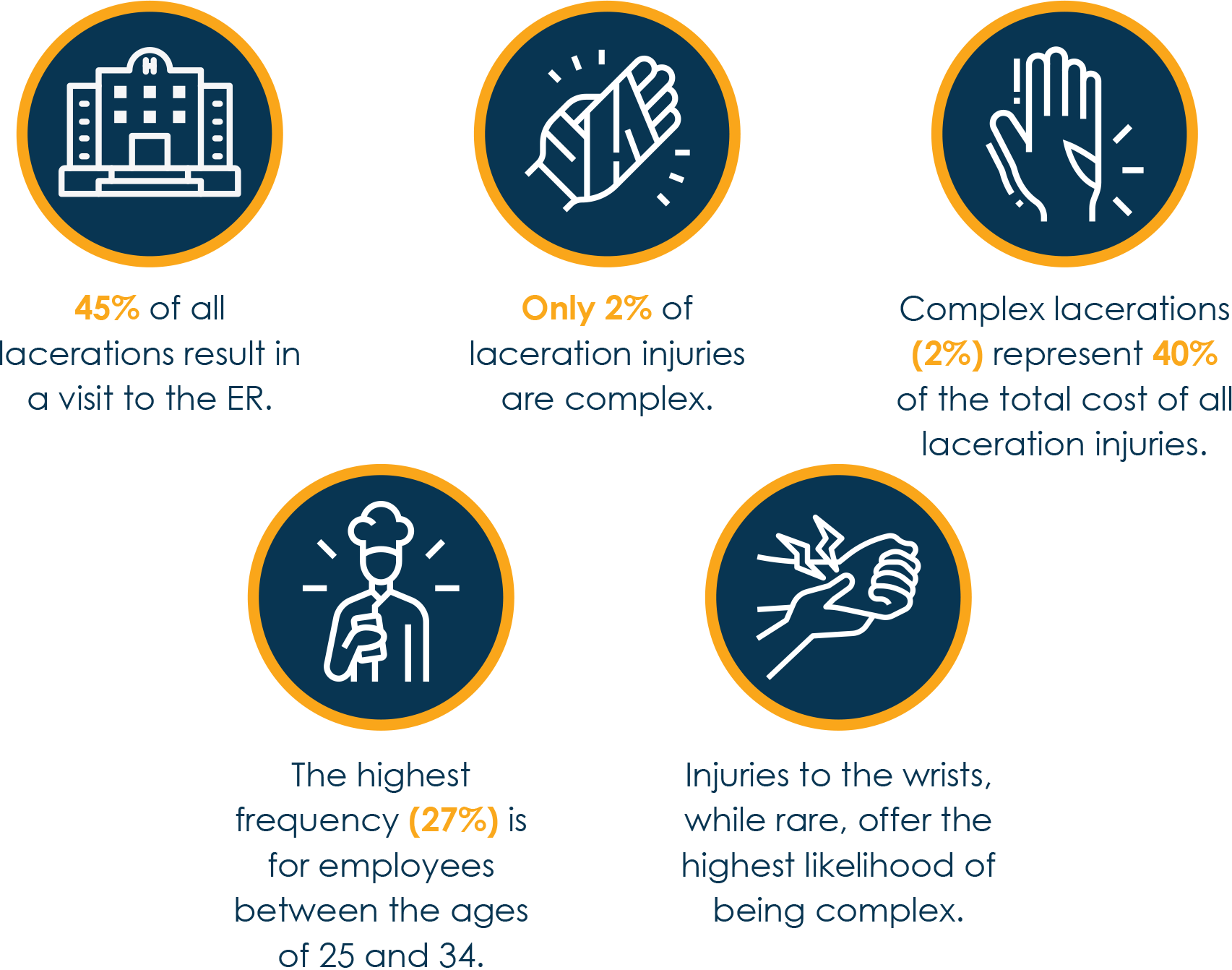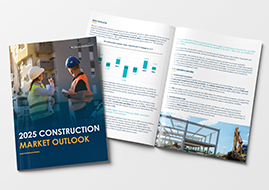By: Brent Herrin

March 24, 2022 — Outside of good food and family, holidays centered on a meal, such as Thanksgiving, can contribute to a spike in ER visits due to knife-related injuries. The reason these injuries happen in residential settings are often the same reason these injuries happen in restaurants and commercial kitchens.
Given the high frequency of knife injuries, Gallagher Bassett (GB) recently completed a study on restaurant-industry lacerations by reviewing claims from the past five years.
Key Findings:

Outside of physical injuries to your team members, the cost of these injuries and the time away from work adds a significant amount to your Total Cost of Risk (TCOR). With that in mind, it's important to identify how cuts and lacerations can be prevented through everyday practices that can be implemented without special equipment.
Honing vs. Sharpening
From being able to skin fish or produce consistently sized filets to being able to quickly chop up vegetables, a sharp knife gets the job done faster. Having a sharp knife not only takes strain off the user, it reduces the risk of accidental laceration. As the knife dulls, or the blade tip curls, the knife begins to slip much easier when pressure is applied, which, in turn, can cause an accident.
A common misunderstanding regarding knives is the need to hone vs. sharpen. Sharpening is literally grinding off pieces of a knife in an effort to make it sharper. This is something that is typically required no more than every six to 12 months, but could be required sooner based on how the knife is used. Honing is merely maintaining an already sharp knife. As a knife is used, the sharp edge begins to roll overtime. This not only happens quickly, but also on a scale that is difficult to see with the human eye. By honing the knife, the edge is straightened and returned to its sharpest performance.
Honing is the simplest way to keep a knife sharp in between professional sharpening, and anyone who uses a knife should become familiar with this process.
Keeping the Edge
Besides having your knives sharpened and keeping them honed, another way to retain an edge while further preventing injuries is to use high-quality cutting boards. Using a cutting board will prevent food from sliding around as it's being cut while also helping to prevent the knife from sliding under pressure. High-quality cutting boards are also typically made from materials designed to prevent rapid dulling of your knives, such as dense wood or rubber. Keeping a knife from dulling not only helps to prevent accidents, it also makes accidents less severe. Dull blades are wider and more jagged, leaving wider and more jagged cuts, opposed to a sharpened blade, which leaves cleaner, thinner cuts, resulting in quicker healing and recovery. This is also true of a blade that is sharpened but not properly honed, where the resulting cut is similar to one produced by a dull knife.
Danger in the Water
Sticking hands into soapy water opens up the risk of unknowingly impacting a knife. Consider practices that disallow the placement of knives in sinks or tubs. Knives should be cleaned immediately after usage or placed in a brightly labeled, clearly marked container/tub specifically for knives. After being cleaned, all knives should immediately be returned to their designated areas and should never be left out unattended, as they can easily turn a slip and fall into something much worse. Further, and for the same reason, knives should be stored in a way that prevents anyone from falling into them, such as in guarded racks or knife sheaths.
Safety Measures in the Kitchen
As with other areas of commercial kitchens, personal protective equipment (PPE) is essential for preventing or lessening severity of injuries. Whenever a sharp knife is being used, the team member should always use cutting gloves made of stainless steel or Kevlar. Additionally, depending on the volume of knife usage in your restaurant, you may want to consider a rule that prevents communicating with those that are currently using knives. Although professionals make it look effortless, efficient, and safe, cutting requires focus. Due to the incredible frequency of cuts, even a short gap in attention can result in a mistake.
It Happens — But We Can Help
In every kitchen, even best practices will eventually result in an error. Regardless of the training and processes, eventually someone is going to be cut due to exposure to the high frequency of knife usage. Employees need to have a clear process to follow in the event someone is injured. Additionally, first aid equipment needs to be fully stocked and easily accessible on-site at all times.
Due to the risk of infection, all injuries need to be reported and followed up on to mitigate significant medical issues. This does not mean all injuries will turn into full-fledged claims. Laceration injuries are ideal for the use of a well-designed nurse triage program like GB's Priority Care 365 (PC365). PC365 allows for a medical professional to quickly visually assess a laceration or any other nonemergency injury and assist the injured worker in self-care or referral to urgent care if appropriate. Urgent care visits for low-complexity injuries average approximately half the cost of an ER visit.
Through the use of a nurse triage program, you can reduce your claim volume while simultaneously providing a high-quality and speedy medical service to your employees.
Authors

Brent Herrin
Make Gallagher Bassett your dependable partner
When making the right decision at the right time is critical to minimize risk for your business, count on Gallagher Bassett's extensive experience and global network to deliver.

